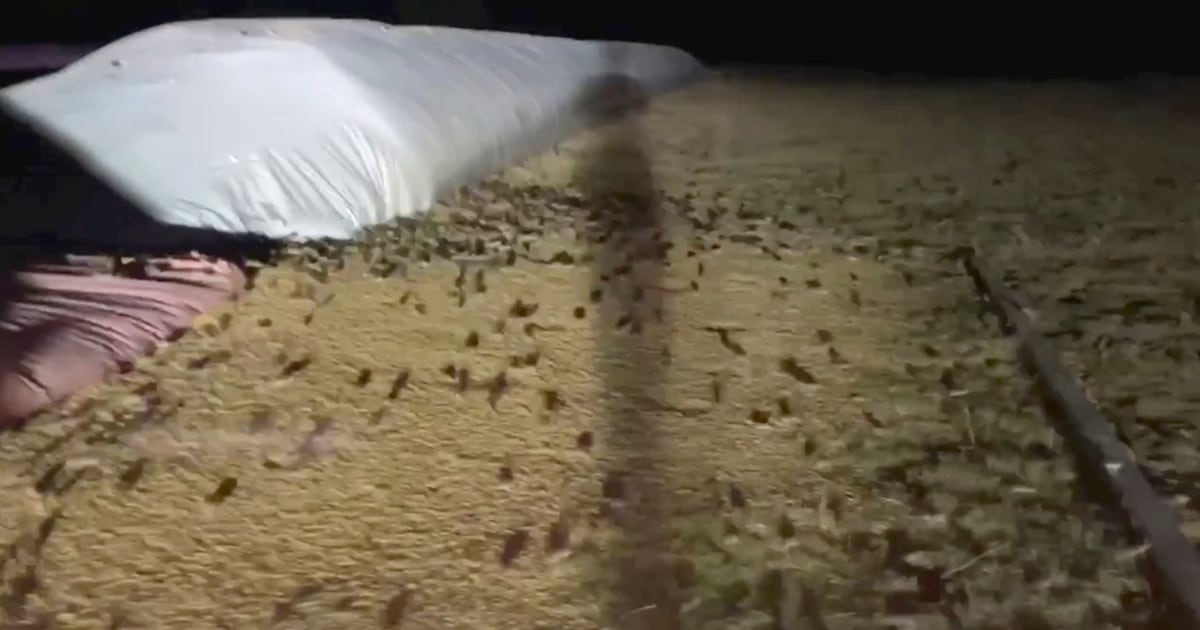
SYDNEY – After one of the worst seasons of wildfires and a global pandemic, Australia now faces the final challenge at the end of the day: a “monumental” plague of mice.
Millions of rodents roam parts of Australia’s eastern states, with residents sharing horror encounters on a daily basis.
With an epicenter in rural New South Wales, farmers have uploaded videos to social media of mice covering their land, damaging crops and settling in homes.
Guy Roth, who works on a sprawling University of Sydney research farm near the New South Wales town of Narrabri, said mice had overtaken the grounds.
“I know we had two mice per square meter in our pastures at the top … [so] if I get the math right, it’s 20 million mice. That’s more mice than the population of most major cities, ”he said.
Roth said that at one point, he and his family were catching and throwing about 100 mice in their homes and offices every day.
‘They are all over the house. Every time you open a drawer, you might find one, ”he said. “You’re at the desk and a mouse will run over it.”
He said the mice ate the cotton crops and also the grain stored in silos.
Roth, who has spent his entire life in regional and rural Australia, said this was “the worst mouse infestation I’ve ever seen.”
They sure smell. That’s what my memory of this will be – the smell, ”he said. “The smell of the dead mice in and around the house and on the farm.”
Although the health effects on humans are not serious, at least one report has been made of the rare mouse-related disease, lymphocytic choriomeningitis.
And at least three people have been bitten by mice in New South Wales hospitals while admitted for non-mouse-related problems.
A spokesman for the state government’s health service, NSW Health, said these bites were “minor” and that “proper treatment is needed.”
“NSW Health employees are responding with appropriate controls,” the spokesperson said, listing measures such as more bait and catch, odor repellants and blocking access.
The spokesperson added, “The current mouse plague in Western NSW is a natural phenomenon.”
What causes the plague?
Steve Henry conducts research on mice with Australia’s national scientific agency, the Commonwealth Scientific and Industrial Research Organization.
Henry said the outbreak, which belongs to the non-native house mouse, is “monumental” and continues to have serious economic and social repercussions.
“Some farmers are giving up the summer crops … because the mice have damaged them so badly, so that’s essentially a total loss of crops,” he said. “And in some scenarios where farmers have managed to get the crops through to harvest, they’ve disapproved of it because it’s full of mouse poo.”
But he said mouse infestations in Australia can occur every five to 10 years due to a combination of factors.
“We’ve had a series of dry years and [now] the drought is essentially broken, so the mice switch to that change in environmental conditions and they start reproducing, ”he said. “The farmers have had a good harvest and that ensures a lot of food in the system. So you have favorable climatic conditions, favorable food in the system, a lot of good shelter, a lot of moisture. “
And he said that mice are prolific breeders because they “can start breeding when they are 6 weeks old, and then they can have a litter of six to 10 puppies every 19 to 21 days.”
But Henry said a mouse infestation usually ends abruptly with “a population crash,” although it is difficult to predict when this will happen.
The winter crops
Farmers in plague-stricken areas are now looking to winter crops, which are typically sown in April and May in this part of the southern hemisphere.
The industry group NSW Farmers has “serious concerns” that some farms will lose all the seed they have planted to the mice.
James Jackson, president of NSW Farmers, said urgent action is needed by the state government, including emergency permission to use the pesticide zinc phosphide and financial support through a small grant program.
“Mouse operation is very expensive. The severity of the current plague has resulted in the need for multiple aerial and ground applications in growing areas … Action is needed now, ”he said.
According to the group, heavy rainfall in recent days has reduced the number of mice in some areas, but they are still “rampant” in the central west and northwest of NSW.
“I hear the rain has pushed more of them into homes and vehicles,” said the group’s spokesman Michael Burt.
For now, Australians like Roth hope that the plague will end soon.
“Everyone tolerates it, but we really have had enough,” he said.